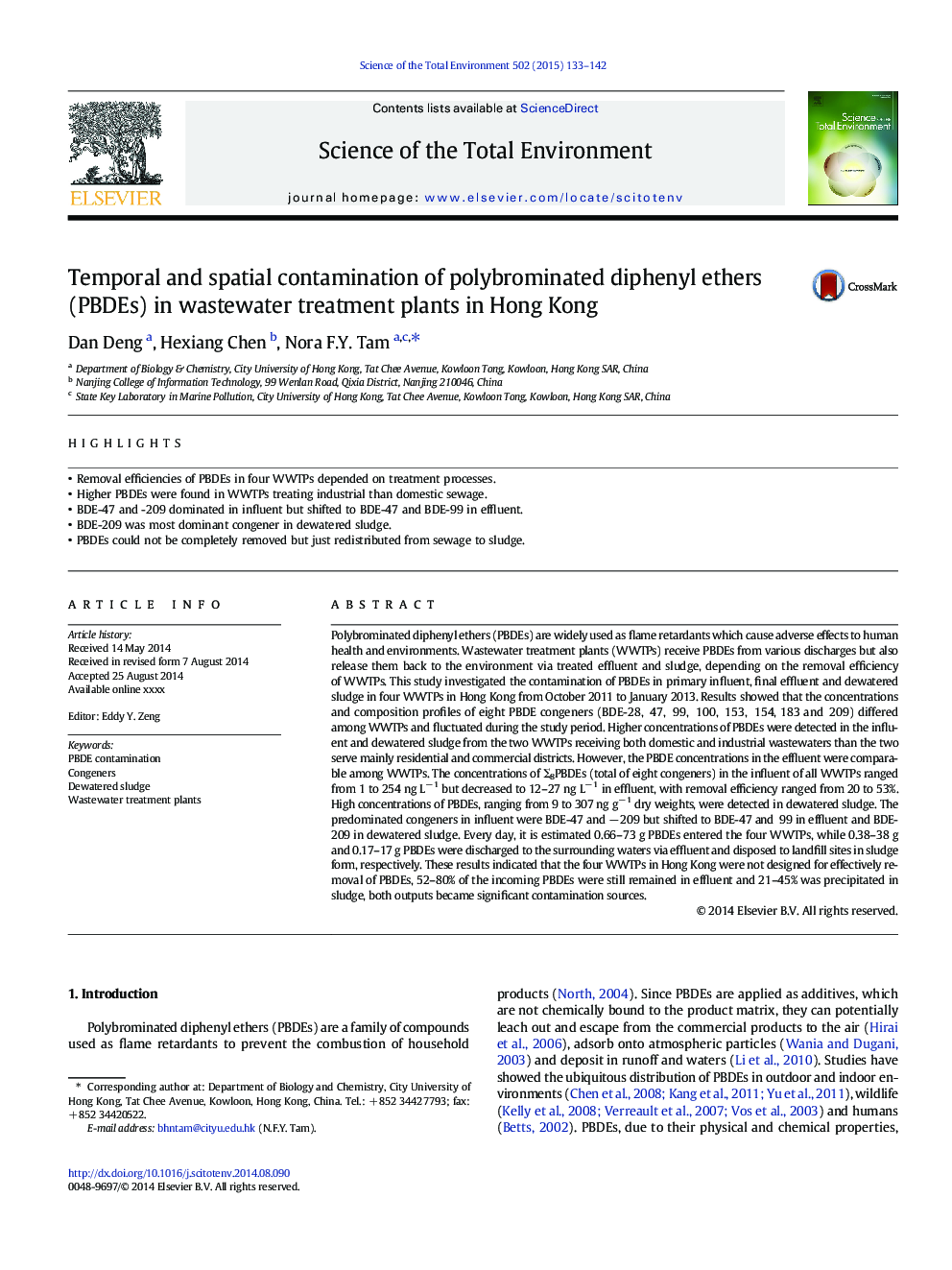| کد مقاله | کد نشریه | سال انتشار | مقاله انگلیسی | نسخه تمام متن |
|---|---|---|---|---|
| 6328393 | 1619772 | 2015 | 10 صفحه PDF | دانلود رایگان |
عنوان انگلیسی مقاله ISI
Temporal and spatial contamination of polybrominated diphenyl ethers (PBDEs) in wastewater treatment plants in Hong Kong
دانلود مقاله + سفارش ترجمه
دانلود مقاله ISI انگلیسی
رایگان برای ایرانیان
کلمات کلیدی
موضوعات مرتبط
علوم زیستی و بیوفناوری
علوم محیط زیست
شیمی زیست محیطی
پیش نمایش صفحه اول مقاله

چکیده انگلیسی
Polybrominated diphenyl ethers (PBDEs) are widely used as flame retardants which cause adverse effects to human health and environments. Wastewater treatment plants (WWTPs) receive PBDEs from various discharges but also release them back to the environment via treated effluent and sludge, depending on the removal efficiency of WWTPs. This study investigated the contamination of PBDEs in primary influent, final effluent and dewatered sludge in four WWTPs in Hong Kong from October 2011 to January 2013. Results showed that the concentrations and composition profiles of eight PBDE congeners (BDE-28, ï¼47,  ï¼99,  ï¼100, ï¼153,  ï¼154, ï¼183 and ï¼209) differed among WWTPs and fluctuated during the study period. Higher concentrations of PBDEs were detected in the influent and dewatered sludge from the two WWTPs receiving both domestic and industrial wastewaters than the two serve mainly residential and commercial districts. However, the PBDE concentrations in the effluent were comparable among WWTPs. The concentrations of Σ8PBDEs (total of eight congeners) in the influent of all WWTPs ranged from 1 to 254 ng Lâ 1 but decreased to 12-27 ng Lâ 1 in effluent, with removal efficiency ranged from 20 to 53%. High concentrations of PBDEs, ranging from 9 to 307 ng gâ 1 dry weights, were detected in dewatered sludge. The predominated congeners in influent were BDE-47 and â 209 but shifted to BDE-47 and ï¼99 in effluent and BDE-209 in dewatered sludge. Every day, it is estimated 0.66-73 g PBDEs entered the four WWTPs, while 0.38-38 g and 0.17-17 g PBDEs were discharged to the surrounding waters via effluent and disposed to landfill sites in sludge form, respectively. These results indicated that the four WWTPs in Hong Kong were not designed for effectively removal of PBDEs, 52-80% of the incoming PBDEs were still remained in effluent and 21-45% was precipitated in sludge, both outputs became significant contamination sources.
ناشر
Database: Elsevier - ScienceDirect (ساینس دایرکت)
Journal: Science of The Total Environment - Volume 502, 1 January 2015, Pages 133-142
Journal: Science of The Total Environment - Volume 502, 1 January 2015, Pages 133-142
نویسندگان
Dan Deng, Hexiang Chen, Nora F.Y. Tam,